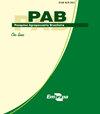巴西中部抗草甘膦酸草的化学和栽培管理策略
IF 0.7
4区 农林科学
Q3 AGRICULTURE, MULTIDISCIPLINARY
引用次数: 1
摘要
摘要本研究的目的是评价不同化学处理对大豆作物中抗草甘膦酸草(Digitaria insularis)的管理效果,并将除草剂组合与维持饲草品种相结合。实验设计采用4×5分块式随机完全区组,共设4个重复。4种除草剂组合:草硫磷、草甘膦、对甲基氟草氧磷、草铵膦和s-甲草胺;马塞、塔马尼和祖里三个品种的马塞、乌氏绿草覆盖和休耕;另一项对照试验是在大豆作物被酸草和杂草侵染的干燥期和出苗期单独施用草甘膦。在大豆播种前和出苗期,除草剂对大豆成虫的控制作用达到90%以上,直至收获。收获后,又有新的酸草出现,主要是在淡季没有绿化覆盖的地块上。在大豆中过量播种饲草品种有利于这些植物的建立,从而干扰了酸草的出苗和生长。在淡季维持牧草品种的基础上,采用除草剂联合化学处理对抗草甘膦酸草成虫有较好的防治效果。本文章由计算机程序翻译,如有差异,请以英文原文为准。
Chemical and cultural management strategies for glyphosate-resistant sourgrass in central Brazil
Abstract The objective of this work was to evaluate different chemical treatments, associating herbicide combinations with the maintenance of forage species in the off-season, for the management of glyphosate-resistant sourgrass (Digitaria insularis) in a soybean crop. The experimental design was a randomized complete block in a 4×5 split-plot arrangement, with four replicates. The treatments consisted of: four combinations of the clethodim, glyphosate, haloxyfop-p-methyl, glufosinate ammonium, and s-metolachlor herbicides in the plots; green covers with the Massai, BRS Tamani, and BRS Zuri cultivars of Panicum maximum and with Urochloa ruziziensis, as well as fallow, in the subplots; and a control with the isolated application of glyphosate at the desiccation and post-emergence of the soybean crop infested with sourgrass and weeded. The herbicides tested before sowing and at post-emergence of soybean promoted a control above 90% of adult sourgrass plants until grain harvest. After harvest, there was a new emergence of sourgrass, mainly in the plots without green cover in the off-season. Overseeding soybean with forage species allowed of the establishment of these plants, which consequently interfered in sourgrass emergence and growth. The chemical treatments with herbicide combinations associated with the maintenance of forage species in the off-season are effective for the control of adult glyphosate-resistant sourgrass plants.
求助全文
通过发布文献求助,成功后即可免费获取论文全文。
去求助
来源期刊

Pesquisa Agropecuaria Brasileira
农林科学-农业综合
CiteScore
1.20
自引率
0.00%
发文量
45
审稿时长
9-18 weeks
期刊介绍:
Pesquisa Agropecuária Brasileira – PAB – is issued monthly by Empresa Brasileira de Pesquisa Agropecuária – EMBRAPA, affiliated to Ministry of Agriculture, Livestock and Food Supply. PAB publishes original scientific-technological articles on Plant Physiology, Plant Pathology, Crop Science, Genetics, Soil Science, Food Technology and Animal Science.
Its abbreviated title is Pesq. agropec. bras., and it should be used in bibliographies, footnotes, references and bibliographic strips.
 求助内容:
求助内容: 应助结果提醒方式:
应助结果提醒方式:


